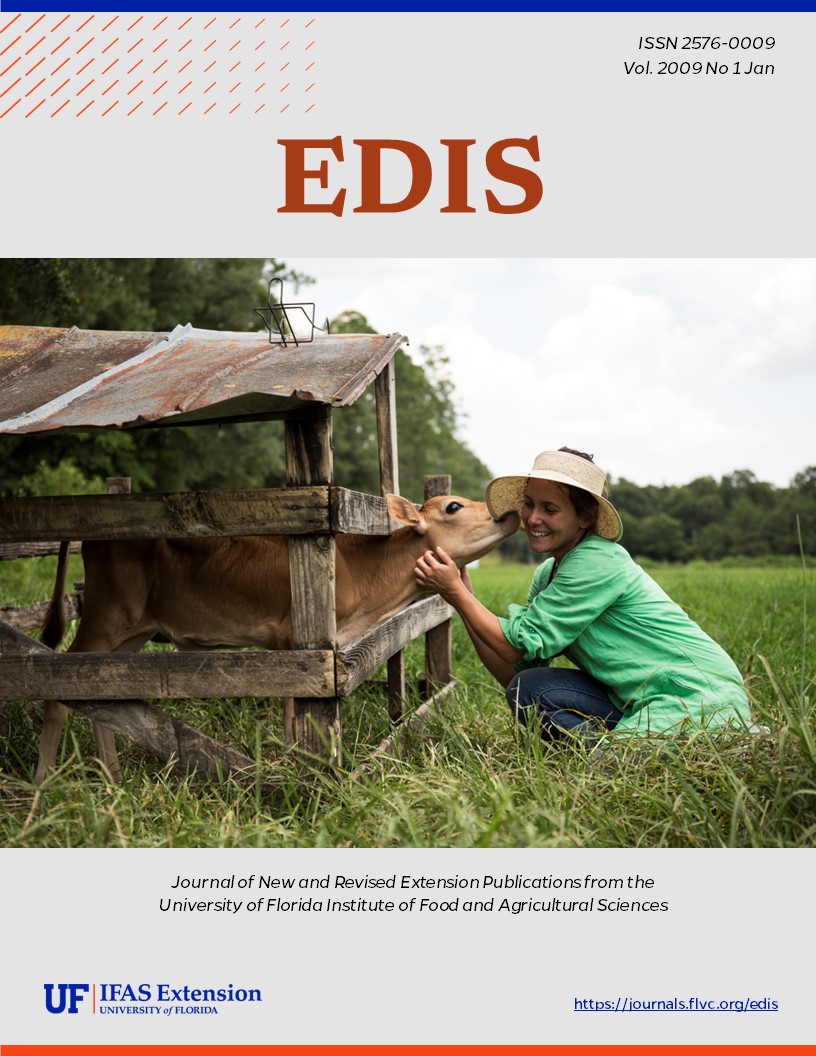Abstract
Revised! FOR-182, a 7-page illustrated fact sheet by Jim Parkhurst and Martha Monroe, highlights key wildlife management issues in interface forests and provides background information on potential conflicts. Includes references. Published by the UF School of Forest Resources and Conservation, October 2008.
References
Canterbury, G. E.; T. E. Martin; D.R. Petit; L. J. Petit; and D. F. Bradford. 2000. Bird communities and habitat as ecological indicators of forest condition in regional monitoring. Conservation Biology 14: 544-558 https://doi.org/10.1046/j.1523-1739.2000.98235.x
Conover, M. R. 2002. Resolving Human-Wildlife Conflicts: The Science of Wildlife Damage Management. Boca Raton, FL: CRC Press LLC, Lewis Publishers.
Cordell, H. K. and E. Macie. 2002. Population and demographic trends. In Human Influences on Forest Ecosystems: The Southern Wildland- Urban Interface Assessment (Gen. Tech. Rep. SRS-55). Eds. E.
Macie and L. A. Hermansen, 11-34. Asheville, NC: USDA, Forest Service, Southern Research Station.
Cummings, C. J. 1999. Wildlife Control (HGIC 2362). Clemson, SC: The Clemson University Cooperative Extension Service, http://hgic.clemson.edu/factsheets/HGIC2362.htm (accessed May 4, 2005).
Decker, D. J.; T. L. Brown; and W. F. Siemer, eds. 2001. Human Dimensions of Wildlife Management in North America. Bethesda, MD: The Wildlife Society.
Dowd, C. 1992. Effect of development on bird species composition of two urban forested wetlands in Staten Island, New York. Journal of Field Ornithology 63(4): 455-461.
Duryea, M. L. and L. A. Hermansen. 2002. Challenges to forest resource management. In Human Influences on Forest Ecosystems: The Southern Wildland-Urban Interface Assessment, Eds. E. Macie and L. A. Hermansen, 93-110. Asheville, NC: USDA, Forest Service, Southern Research Station.
Faulkner, G.; J. Gober; J. Hyland; K. Muehlenfeld; S. Nix; P. Waldrop; and D. Weldon 1998. Forests of the South. Montgomery, AL: Southern Group of State Foresters, http://members.aol.com/JOSTNIX/sotree.htm#diverse (accessed August 5, 2005).
Graham, K. L. 2002. TERRA-3: Human influences on forest wildlife habitat. In The Southern Forest Resource Assessment (Gen. Tech. Rep. SRS-53). Eds. D. Wear and J. Greis, 63-90. Asheville, NC: USDA, Forest Service, Southern Research Station, http://www.srs.fs.usda.gov/sustain/report/terra3/terra3.htm (accessed August 5, 2005).
Hostetler, M. E.; G. Klowden; S. W. Miller; and K. N. Youngentob. 2003. Landscaping Backyards for Wildlife: Top Ten Tips for Success. (Circular 1429). Gainesville: University of Florida Institute of Food and Agricultural Sciences. http://www.edis.ifas.ufl.edu/UW175 https://doi.org/10.32473/edis-uw175-2003
NatureServe. 2000. NatureServe Explorer: An Online Encyclopedia of Life. Arlington, VA: Association for Biodiversity Information, http://www.natureserve.org/explorer/index.htm (accessed August 23, 2005).
U.S. Fish and Wildlife Service and U.S. Department of Commerce, U.S. Census Bureau. 2002. 2001 National Survey of Fishing, Hunting, and Wildlife-Associated Recreation 2-6, 37-51, http://www.census.gov/prod/2003pubs/fhw01-us.pdf (accessed March 25, 2008).
Wear, D. and J. Greis. 2002. The Southern Forest Resource Assessment: Summary Report (Gen. Tech. Rep. SRS-54). Asheville, NC: USDA, Forest Service, Southern Research Station, http://www.srs.fs.usda.gov/sustain/report/ (accessed April 4, 2005). https://doi.org/10.2737/SRS-GTR-54

